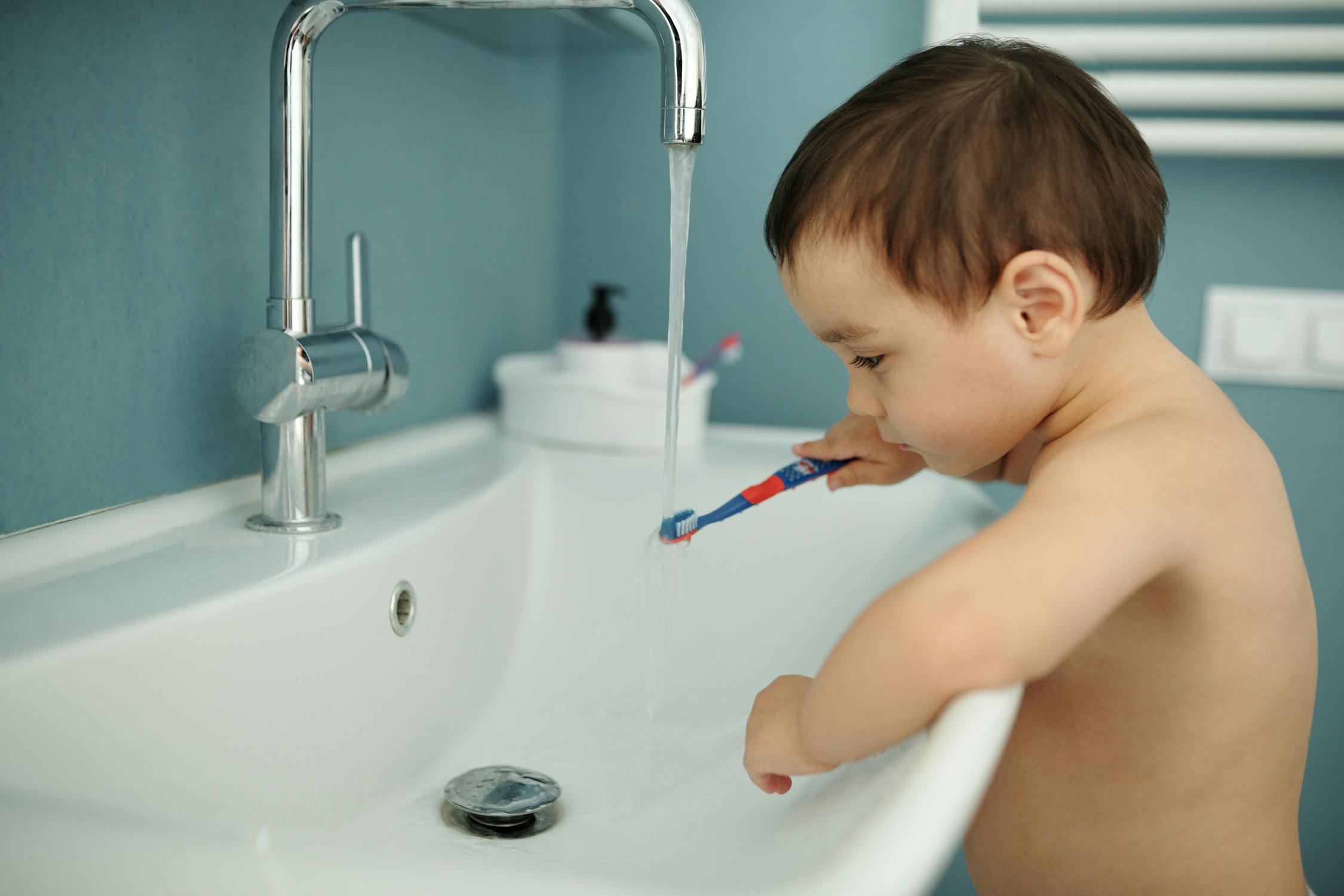Teaching children proper brushing techniques is essential for establishing good oral hygiene habits that last a lifetime. Along with brushing and flossing, staying hydrated is an often-overlooked but important part of maintaining healthy teeth. Just like Chilly Moose understands the importance of quality outdoor gear for adventure, parents can appreciate the role of water as an essential “gear” for their kids’ dental health. Drinking water keeps their mouths clean, washes away food particles, and helps build strong teeth, contributing to overall wellness. Here are ten practical tips for teaching kids good brushing habits while encouraging healthy hydration, setting them on a path for a lifetime of bright smiles and strong teeth.
1. Start Early
It’s beneficial to start teaching kids about brushing as early as possible. Even before their first teeth come in, you can begin to clean their gums with a soft cloth. As soon as teeth appear, introduce a soft-bristled toothbrush and fluoride toothpaste. The earlier you begin, the more likely it is that good brushing habits will become second nature.
2. Use the Right Toothbrush
Choosing the right toothbrush for your child is important. Use a child-sized toothbrush with soft bristles that can gently clean their teeth without causing damage to their gums. The small head should fit comfortably in their mouth, allowing them to reach all areas of their teeth. Many children’s dentists in Toronto recommend using toothbrushes with fun designs or characters to make brushing more engaging for kids.
3. Teach Proper Technique
Show your child the correct brushing technique by demonstrating how to brush in gentle, circular motions. Emphasize brushing all surfaces of the teeth, including the front, back, and chewing surfaces. Guide them to hold the toothbrush at a 45-degree angle to the gums. Teaching them the right technique from the beginning helps ensure they are brushing effectively.
4. Set a Brushing Routine
Consistency is key to forming good habits. Establish a regular brushing routine by encouraging your child to brush their teeth twice a day—once in the morning and once before bed. Use a timer to ensure they brush for the full two minutes recommended by dentists. You can use a timer with fun sounds or music to make the process more enjoyable.
5. Use Fluoride Toothpaste
Fluoride toothpaste helps to strengthen tooth enamel and prevent cavities. For children, use a pea-sized amount of fluoride toothpaste. Explain to them that fluoride helps protect their teeth from decay and keep their smile healthy. It’s important to supervise young children to ensure they don’t swallow the toothpaste.
6. Make Brushing Fun
Incorporating fun into brushing time can make the process more appealing for kids. Use interactive toothbrushes that play music or light up to make brushing more engaging. Let your child choose their own toothbrush and toothpaste flavors. You can also turn brushing into a game or a family activity to make it a positive experience.
7. Encourage Independence
As your child grows, encourage them to take responsibility for their own brushing. Start by guiding their hand and gradually allow them to brush on their own. Offer guidance and corrections as needed, and make sure they understand the importance of brushing all areas of their teeth. Independence helps build their confidence and reinforces good habits.
8. Supervise and Assist
Even after your child starts brushing on their own, it’s important to continue supervising and assisting them, especially until they are around 8 or 9 years old. Regularly check their brushing technique and ensure they reach all areas of their mouth. Offer guidance and help with brushing if necessary to make sure they are doing it thoroughly. Consulting with a dental clinic can provide additional tips and professional advice on maintaining effective brushing habits.
9. Incorporate Flossing
Teaching kids to floss is an important part of their oral hygiene routine. Start introducing flossing when their teeth begin to touch each other. Use floss picks or interdental brushes designed for children to make the process easier. Explain the importance of flossing to remove food particles and plaque between their teeth.
10. Visit the Dentist Regularly
Regular visits to a family dental office help reinforce the importance of oral hygiene. Schedule check-ups and cleanings every six months to monitor your child’s dental health and ensure they are brushing and flossing correctly. The dentist can provide additional tips and encouragement, making dental visits a positive experience.
Teaching kids proper brushing techniques is an essential step in ensuring they maintain good oral health throughout their lives. By starting early, using the right tools, and making brushing fun, you can help your child develop strong dental hygiene habits. Consistency, supervision, and regular dental visits will further support their efforts and ensure they understand the importance of taking care of their teeth. With these tips, you can set your child on the path to a lifetime of healthy smiles.





